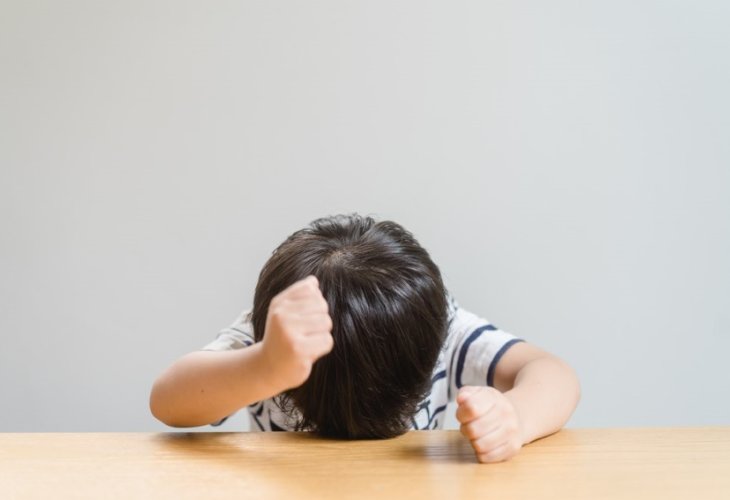Navigating the Urge to Splurge: A Guide for Families
At the core, we often get confused by the relentless demands and the illusion that solutions lie just beyond a purchase. But where do we draw the line? When should we indulge, and when do we push back?
 (Photo: Shutterstock)
(Photo: Shutterstock)What should we do with all the incessant needs, impulses, and endless shopping?
People with ADHD generally have a multitude of urgent needs that scream to be met right here and now.
Ever feel this way? "I want ← need ← must have ← if not now, I can't go on"…
Just buy me this watch and everything will be fine…
I need that bike and you'll see I'll never be bored again…
I must have that puzzle / shirt / next big brand now… and I can't go to camp / seminar / work without it…
And he's just such a good kid – so you buy it.
And she's a good girl – so why not?!
But the moment after the purchase - the watch is lost, the bike rusts, clothes are forgotten, and again, it's "I'm bored and unhappy"...
At the core, we often get confused by the relentless demands and the illusion that solutions lie just beyond a purchase. But where do we draw the line? When should we indulge, and when do we push back?
Here's how.
In the experience of a child / teenager / person who has yet to begin to deal - there is a firm belief that the object / action / new acquisition - will provide an answer and serve as a solution to all desires and needs, from boredom relief to social acceptance, meaning in life, interest, and so on. All these things momentarily create a sense of enjoyment and happiness (though fleeting) - as long as there's expectation.
But the moment the expectation is fulfilled - the happiness evaporates.
When the action is repeated over and over, a dangerous behavior pattern develops.
The child / teenager feels lacking, a certain emptiness.
Emptiness ← translates to a need.
The need ← triggers an urge to perform an action that will fill the void (what we call - desires).
The role of the urge - to quiet / satisfy / soothe / fulfill the need.
When a person is lacking sleep, there arises a need to sleep, and an urge will awaken to close their eyes and wake up refreshed.
When the lack is emotional – take loneliness, for example – the need for company will trigger an urge to call a friend.
But what if she fulfills her need through shopping?
For a moment, she might redirect her focus from loneliness to the excitement of shopping. The thrill and focus on the shopping / the item purchased will cause her momentarily not to realize how bad and lonely she feels.
But the next moment she'll notice not only is her wallet empty, but so is her heart. And the intensity of the loneliness will be even harder. Because the real need didn't get a real answer.
When the incorrect action pattern repeats - an addiction might develop, and despair could form.
As long as the response isn't accurate to the need – one will chase from thing to thing, with no solid ground to stand on. Because nothing fills the void, and the gap grows.
Thus, we need to clarify two points:
A. What is the true need of this person.
B. Which urge truly fulfills the need, and which does not.
What are needs? A need is the movement of life, as it is said: "Satisfies each living thing's desire".
It's the pulsating energy within us that drives action.
From a neurobiological perspective, the neurotransmitter dopamine serves this movement - to move, achieve, conquer, stretch beyond self-limits, and want more.
We have physiological and emotional needs. When they're unmet – it leads to a distress experience. We believe needs must be fulfilled. The question is how, when, and to what end.
For someone with an attention disorder where dopamine supply isn't continuous. They'll be very excited when experiencing a dopamine surge, causing brain arousal - in moments of thrill, novelty, challenge, or risk.
They'll also form a false belief that there's only one way to satisfy the urge, without discerning what the true need is. They'll fixate on the object / person / action, mistakenly thinking it's their salvation, without asking what's the true need driving them, how, when, and for what purpose they desire it.
How to Break the Cycle
In a nutshell - change the focus.
Instead of focusing on the object / action prompted by impulse - I want ← need ← must have (which is always a stop sign, not a command to proceed), we must shift our focus to the missing link: clarifying the true need.
The question we need to ask is what thought preceded the urge. What is the true need?
Are there other ways to fulfill it, in a way that not only provides momentary pleasure but real satisfaction from a lasting achievement, fullness, and fulfillment.
We must teach our children, and the inner child within us who always seeks more, the difference between a need and an urge, between momentary pleasure and real satisfaction.
May we continue wanting, and also learn contentment.
Eilat Vogberright is an ADHD coach, parenting coach, lecturer, and author of the books "Function Like a Manager" and "Attuned for You to Know".

